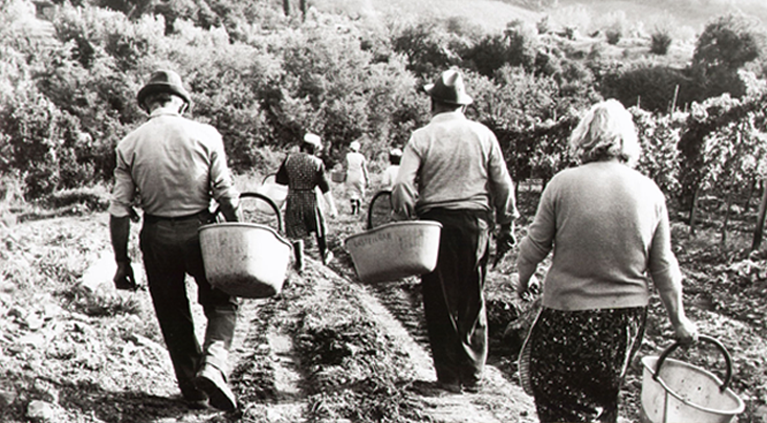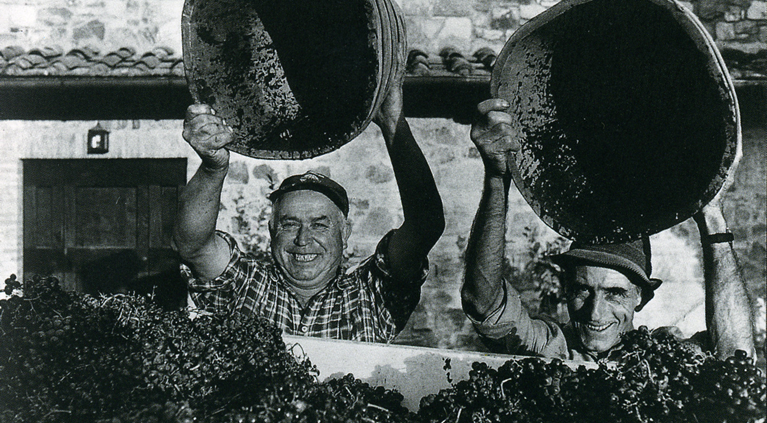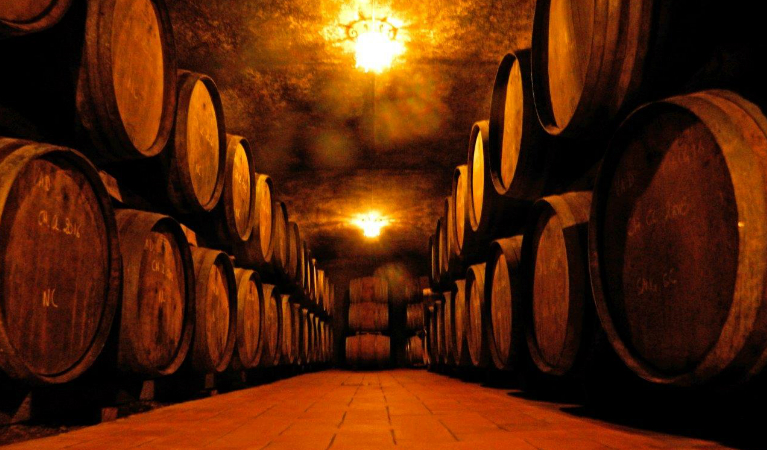

“Castellare di Castellina’s standard bearer. Only native vines, Sangioveto and Malvasia Nera, for the first Italian wine in Wine Spectator’s TOP 10 ranking.”
Discover“Pure Merlot of absolute finesse. A cult wine, whose production consists of a few prised bottles.”
Discover“100% Cabernet Sauvignon, displaying a character reminiscent of a Chianti, in terms of the freshness and elegance of its texture.”
Discover“A company cru obtained from a selection of grapes from the Poggiale vineyard. One of Castellare’s best.”
Discover“A careful selection of the best grapes on the estate, for obtaining, every year, a wine that best characterises our territory.”
Discover“From Sangiovese vines over 30 years old comes the Chianti Classico Torre Alta, a wine whose name evokes the iconic tower of the Castellare winery”
Discover“Only native vines, remaining true to the original formula of this great wine. A point of pride for Castellare di Castellina.”
Discover“A wine that keeps the tradition of the Tuscan vinification technique alive. An ancient story which Castellare continues to tell.”
Discover“A wine in which the depth of a Chardonnay and the aroma typical of a Sauvignon Blanc come together in a fruity and aromatic blend.”
Discover“Vines older than 30 years in the Canonico vineyard, used to produce a Chardonnay which ferments in barriques in a style similar to Burgundy traditions.”
Discover“A Sauvignon Blanc fermented in barriques, with a personality and character sustained by its elegance and harmony.”
Discover“Produced in strict accordance with tradition, with Malvasia Bianca and Trebbiano grapes dried out in an old Vin Santo barrel storage area.”
Discover“Grappa di Castellare is produced using Sangioveto marc, brought to be distilled within 36 hours and thus able to maintain the freshness of the aromas and notes typical of the grape.”
Discover“Olionovo, that authentic expression used by farmers to define new, freshly pressed extra virgin olive oil. Characterised by a deep green colour, spicy as dictated by tradition, lively and pleasant on the palate.”
Discover“Made with carefully selected wine and based on the refined “truciolo” or chips production method (the wine is percolated through wooden chips). A reverse challenge focused on defeating synthetically produced vinegars.”
DiscoverCastellare di Castellina is not just wine, olive oil ('Olionovo' stands for the fact that, unlike wine, oil does not improve with age), grappa and other quality products, but it also means a warm welcome and the chance to stay in one of the most enchanting settings in the Chianti and all Tuscany. Inside the property, surrounded by the vineyards of Castellare, it's possible to enjoy holidays of rare quality in a rural environment that has been restored according to the criteria defined by the art critic Cesare Brandi: as much conservation as possible while respecting modern lifestyles.

Castellare di Castellina was born of the union of four estates (Castellare, Caselle, San Niccolò and Le Case) on the initiative of Paolo Panerai, with the aim of producing wine of the best possible quality. This was in the 1970s, when the so-called Renaissance of Italian wine had begun. A Renaissance to which Castellare made its own contribution with a combination of tradition and innovation. Tradition in caring for its vineyards and terrains, distinguishing between fields and sodi (in which fields are the more easily worked terrains and sodi - "hard" soils - are the hardest but the best for growing vines), in its decision to continue producing wine according to the Tuscan method, and in its respect of the Chianti Classico denomination - only using indigenous Tuscan grape varieties to produce a wine that is internationally acknowledged as one of the greatest reds in the world. Innovation was pursued first of all with the creation of the first experimental vineyard in the Chianti region together with the University of Milan - directed by Professor Attilio Scienza - and the University of Florence, implementing the first scientific selection of Sangiovese clones (here called Sangioveto). And then by introducing the use of the barrique, following the in-depth research and advice of Emile Peynaud, the most renowned oenologist in living memory, as well as by paying constant attention to each ongoing wine-making process in the incessant, ever-evolving work of producing quality wines. This is a story that demonstrates how tradition, also in the installations, and innovation can draw the best out of the land, showing the younger generations how the hard work and lives of the Mezzadri - the people who once ran the estates as neither owners nor labourers - has been fundamental in shaping the extraordinary landscape of the Chianti. To the Mezzadri and their work Castellare has dedicated a sculpture by Matteo Spender, which stands in the centre of Castellina. The two photos by the great portrait photographer Giuseppe Pino illustrate this sacrifice, but also the joy that making wine brings with it.
Discover more about A Family Passion

Castellare di Castellina, in the heart of the Chianti Classico region, covers a total of 80 hectares - including 20 occupied by olive groves. The vineyards occupy 33 hectares on the hillsides of a natural south-east facing amphitheatre, at an average height of 370 meters above sea level. The vines are aged between 7 and over 45 years, and yields per hectare are kept very low to obtain the maximum quality. Excellent exposure to the sun, good water drainage and a mixed soil containing limestone marl, galestro and little clay produce well-structured, intense wines, both red and white, suitable for long ageing in the bottle. A census of vines undertaken in 1979, together with the findings of the experimental vineyard and micro-vinifications that were carried out and compared, made it possible to re-graft both the Sangioveto and the Malvasia Nera varieties with the best scientifically-produced clones. These were the work of two assistants of Professor Scienza for whom Castellare had established two PhD research scholarships. Through this work, and with Professor Peynaud's encouragement in developing Sangioveto, the Castellare vines now have the best clones for that particular terroir, since Sangiovese is the most sensitive of all vines not only to climate and terrain, but to all the elements contained in the concept of a terroir. No synthetic chemicals are used in the Castellare vineyards, out of respect for nature and to enable the production of organic wines. This philosophy is reflected by the labels, which every year carry a drawing of a different bird found to be increasingly rare due to the indiscriminate use of poisons and herbicides in vineyards.

The Castellare winery has grown in terms of its installations over time as production has increased. In the past it consisted only of concrete tanks with a production capacity of about 200,000 bottles a year; it now produces around 400,000 bottles. When the era of heat-treated steel vinification tanks began, a new winery was built without altering the style of the centuries-old buildings. But on the advice of the greatest Italian winemaker Giacomo Tachis we took care not to do away with the concrete tanks. They were glazed and are now used - following the principles of Tachis - to hold the wine for a few months before bottling. Tachis showed, in fact, that concrete has the ability to make the various components of the wine more cohesive, more one single entity. The Castellare winery was one of the first in Italy to adopt the use of small French oak barrels. These are referred to by everybody as barriques; Luigi Veronelli, recalling the Italian proverb that "the best wine is in small barrels" called them carati (carats). They came to Castellare earlier than elsewhere thanks to the Compagnie Vinicole Conseille, founded by Paolo Panerai together with Baron Edmond de Rothschild - the largest single shareholder of Chateau Lafite - in order to circulate the best wine-making technology. The Compagnie published a practical manual called 100 questions and 100 answers about barriques, an interview with professor Peynaud.
 Modenese, a lover of good cooking and for this reason author of books on the world’s best hotels and restaurants, at 64 he is one of the Italian photographers most sought-after by galleries around the world (from MOMA in New York to the Museum of Modern Art in Paris). The prices offered for his photographs, in this new art market, are of the highest order.
Modenese, a lover of good cooking and for this reason author of books on the world’s best hotels and restaurants, at 64 he is one of the Italian photographers most sought-after by galleries around the world (from MOMA in New York to the Museum of Modern Art in Paris). The prices offered for his photographs, in this new art market, are of the highest order. For a long time his name was linked to the faces of the great jazz artists, from Louis Armstrong to Ella Fitzgerald. All in an extraordinary and very strict black and white for some of the most famous record covers.
For a long time his name was linked to the faces of the great jazz artists, from Louis Armstrong to Ella Fitzgerald. All in an extraordinary and very strict black and white for some of the most famous record covers. Originally a medical student, aged 39 from Novara, he began as head of the photographic department at the magazine MODA. He became assistant to the photographer Giuseppe Pino and then a photographer in his own right for many Italian and American magazines, from Amica to Vanity Fair USA.
Originally a medical student, aged 39 from Novara, he began as head of the photographic department at the magazine MODA. He became assistant to the photographer Giuseppe Pino and then a photographer in his own right for many Italian and American magazines, from Amica to Vanity Fair USA. Milanese aged 39, he took his first shots for Sette. He has been a professional photographer since 1978. He first concentrated on still-life studies of foods and food products, later achieving excellence and fame in this area. Then on to portraits, his true passion. For which he was also willing to re-start from the very beginning.
Milanese aged 39, he took his first shots for Sette. He has been a professional photographer since 1978. He first concentrated on still-life studies of foods and food products, later achieving excellence and fame in this area. Then on to portraits, his true passion. For which he was also willing to re-start from the very beginning. Both photographer and gentleman farmer, he lives and works in Florence. Now 47 years old, his education (degree in political science) and knowledge of languages (English, French and German) could have pointed him towards a diplomatic career.
Both photographer and gentleman farmer, he lives and works in Florence. Now 47 years old, his education (degree in political science) and knowledge of languages (English, French and German) could have pointed him towards a diplomatic career.
Strada Provinciale di Castagnoli SP 130
Loc. Caselle
Castellina in Chianti (Siena)
Tel: +39.0577.742903 - +39.0577.740490
Fax: +39.0577.742814
e-mail: info@castellare.it
The wine shop of the winery follows the opening hours:
- 10:00/13:00 - 14:00/18:00 every day (only friday 10:00/13:00 - 14:00/17:00) from November to April
- 10:00/13:00 - 14:00/19:00 every day (only friday 10:00/13:00 - 14:00/18:00) from May to October
We also await you for a guided tour of our cellars.
For information and reservations, find out more through ours WINE EXPERIENCES.
Alternatively, if you need, contact us at 0577 742903 or by sending an email to the address: visite@castellare.it.
Pre-bookings only.